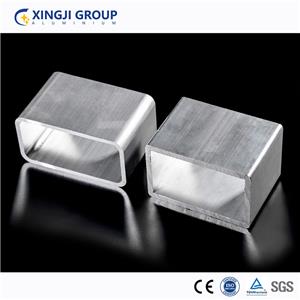WHAT DIFFERENCE SPACERS MAKE IN WINDOW ENERGY EFFICIENCY?
When it comes to enhancing building performance, energy efficient windows are indispensable. They help maintain comfortable indoor temperatures while reducing energy consumption. Among the various components that influence a window's thermal performance, spacers play a vital yet often underestimated role. Spacers not only support the structural integrity of the glazing but also significantly improve energy efficiency. This article explores how spacers work, their impact on thermal performance, and why they are essential for modern windows, including low E glass, bespoke casement windows, and hinged casement windows.
How Spacers Enhance Energy Efficient Windows
Spacers are strips placed between the panes of glass in double or triple-glazed windows. Their primary functions are to maintain the correct distance between glass layers and to create a sealed environment for insulating gases like argon or krypton. This design, combined with low E glass, helps to reduce heat transfer, ensuring the windows are among the best windows for energy efficiency.
Historically, spacers were made from aluminum, a material with high thermal conductivity. This design led to thermal bridging, where heat could escape easily through the edges of the window. Modern warm-edge spacers, made from materials like stainless steel, foam, or polymers, have revolutionized the performance of energy efficient windows. These advanced spacers minimize heat transfer at the window's edge, enhancing the insulation provided by the low E glass.
In bespoke casement windows, which are customized to meet specific design requirements, the role of spacers is even more crucial. These windows often feature intricate designs and configurations, making it essential to ensure that the spacer technology used maximizes thermal performance. Warm-edge spacers in combination with low E glass create a highly efficient barrier against heat loss, making these windows some of the best windows for both style and performance.

Why Spacers Matter in Hinged Casement Windows
Hinged casement windows are a popular choice for homeowners and architects due to their classic appearance and excellent ventilation. However, their energy efficiency largely depends on the components used, particularly spacers. These windows often feature larger glass panes, making the edges more susceptible to heat transfer. By incorporating warm-edge spacers, hinged casement windows can achieve superior thermal performance.
The combination of warm-edge spacers and low E glass in hinged casement windows enhances their insulation capabilities. This pairing reduces heat loss during winter and prevents excess heat gain in summer, helping maintain a comfortable indoor environment year-round. Additionally, these energy efficient windows are more resistant to condensation, which is a common issue in areas with fluctuating temperatures. The spacer prevents the interior glass surface from cooling too much, reducing the risk of moisture buildup.
Warm-edge spacers also contribute to the durability of hinged casement windows. The materials used are flexible and can withstand temperature changes without compromising the window's structural integrity. For those looking to install bespoke casement windows with tailored designs, ensuring the inclusion of advanced spacer technology is key to achieving the highest levels of energy efficiency.
Choosing the Best Windows with Advanced Spacer Technology
Selecting the right spacers is essential when aiming for the best windows in terms of energy efficiency. For homeowners and builders, windows with warm-edge spacer technology and low E glass offer a superior solution. These components work together to reduce U-values, which measure the rate of heat transfer. The lower the U-value, the better the window's insulation performance.
In bespoke casement windows, the flexibility of warm-edge spacers allows for a wide range of custom designs without sacrificing energy efficiency. Whether the windows are designed for residential or commercial use, incorporating high-performance spacers ensures that the benefits of low E glass are fully realized. This makes these windows not only visually appealing but also functional and sustainable.
For those considering hinged casement windows, choosing models with advanced spacers can lead to significant energy savings over time. These windows offer an excellent balance of aesthetics and performance, making them a top choice for both traditional and modern architecture. The inclusion of warm-edge spacers helps maintain indoor comfort and reduces reliance on heating and cooling systems, resulting in lower energy bills and a smaller carbon footprint.

The Role of Spacers in Energy Efficient Windows
Spacers may seem like a small component, but their impact on the performance of energy efficient windows is substantial. They help reduce heat loss, prevent condensation, and enhance the overall durability of the window. When paired with low E glass, spacers enable windows to achieve optimal thermal performance, making them some of the best windows available.
For homeowners and builders seeking customized solutions, bespoke casement windows and hinged casement windows with advanced spacer technology offer the perfect blend of style and efficiency. These windows not only enhance the building's aesthetic but also contribute to long-term energy savings and environmental sustainability. By investing in high-quality spacers, you can ensure your windows deliver maximum energy efficiency and comfort for years to come.




